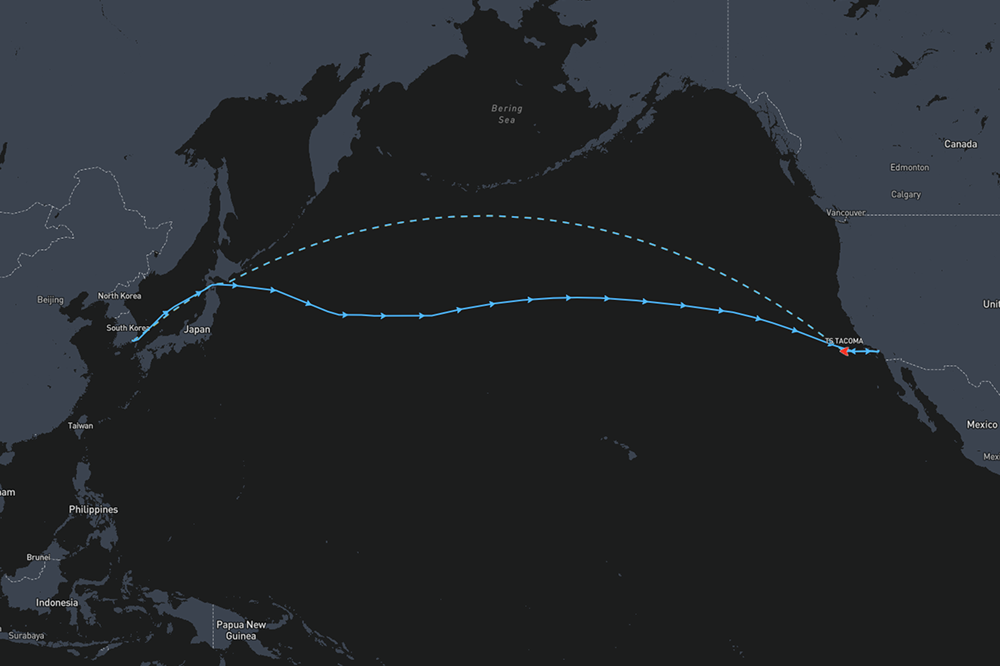Taiwanese shipping company TS Lines has announced plans to withdraw its only vessel from the Asia–U.S. West Coast (AWC) trade next month, marking a full exit from the transpacific market. The move underscores how rising operational costs, including upcoming U.S. port fees, are forcing smaller players to reassess their long-haul exposure.
According to market sources, TS Lines’ decision follows months of weak freight rates and intensifying competition from larger alliances that continue to consolidate capacity. The carrier TS Tacoma, now on its final voyage on AWC route, according to ShipIntel. After Tacoma has reached its destination in Busan New Port (South Korea) it will now focus on the Asia-Austrailia route, where margins remain more stable.
Cost Pressures Mount for Smaller Operators
The withdrawal comes as the U.S. Trade Representative (USTR) prepares to implement new port levies and tariff adjustments in early 2026. Fees that could collectively add over $3 billion in annual costs for major carriers, according to Alphaliner estimates. For smaller independent operators, these added costs threaten already-thin margins on long-haul trades.
Freight rates on the Asia–U.S. West Coast have dropped sharply from their pandemic-era highs, with capacity oversupply and volatile demand compressing profitability. Analysts note that while major carriers like MSC, Maersk, and CMA CGM can absorb temporary downturns, mid-sized lines such as TS Lines lack the scale or network flexibility to remain competitive under the current cost regime.
Market Consolidation Accelerates
TS Lines’ exit adds to a growing list of carriers scaling back transpacific ambitions as global trade adjusts to post-pandemic realities. The move is also symbolic of a broader consolidation trend, with smaller operators increasingly squeezed out of key trade lanes dominated by alliance members.
Industry observers suggest this could signal further reshuffling in 2026, especially as U.S. port fee structures and global emissions compliance costs continue to climb. While the AWC route remains one of the world’s busiest, it’s also become one of the hardest for independents to sustain profitably.
TS Lines will continue to operate within Asia, focusing on routes connecting China, Japan, Vietnam, and the Philippines. But its exit from the transpacific underscores a broader reality: as cost burdens rise and regulatory complexity deepens, scale and not speed is becoming the decisive factor in container








